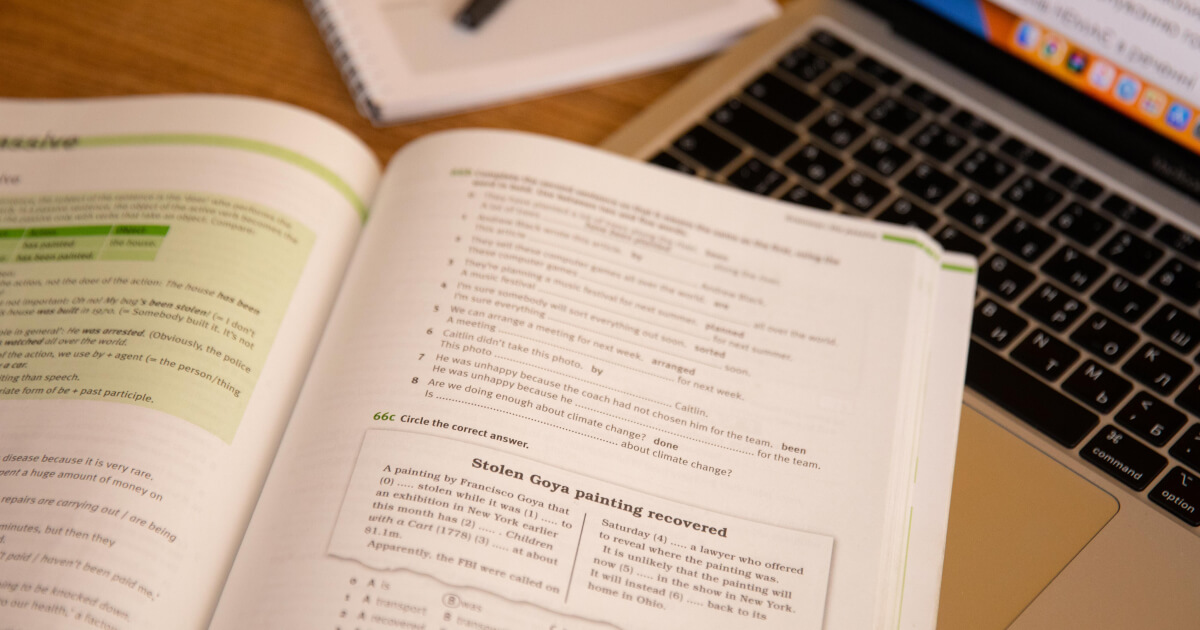How to avoid burnout during the CELTA course?
- Cambridge English
- Teaching qualifications
- Tips & Strategies
- Methodology

27.11.2023
Now more and more we hear that tests are not reliable, that they can’t really check the students’ knowledge, and that they are generally way worse than the open-ended questions, for example.
While some of these concerns might be rather relatable, there is still a lot of space for debate or some following questions at least.
What makes a good test? How to make sure that your test is as effective as it can be. These are the questions that we will try to answer in the article based on Grade University professionals’ experience.

Develop your online teaching skills!
Become an online teaching proThe quality of a test is referred to as its validity.
“Does the test actually test what it aims to test?” is a crucial question for every teacher to consider when creating or selecting a test for their students.
The skills, grammar, and lexis presented in the course must be covered on the test for it to have an appropriate level of validity.
Giving the students an exam that doesn't do this is unfair and, what is more, provides a false image of their progress and achievements.
Furthermore, this is where all the myths about tests come from: the test with low validity indeed might be questionable or even problematic.
There are two types of validity you need to know about.

A test has face validity if it looks valid to those who take it. Therefore, many tests are considered to be good if they seem visually complex.
However, face validity is definitely not the only criterion that the test is supposed to meet.
Face validity is not a reliable indicator of a test's potential efficacy.
But, it is just as crucial as content validity because, for an exam to be effective, both teachers and students must believe it to be reliable.
What it means for a potential test creator is that you always have to think about your test’s design very carefully because even one glance may either motivate or demotivate your students.
How to conduct entry testing?
Another important aspect is content validity.
Public testing authorities have to make sure that their exams have both face validity and content validity by doing pre-testing.
You have to check carefully whether the tasks are level-appropriate, and whether there are no mistakes or ambiguity.
The content validity of a test can be evaluated by parties other than administrators and teachers. To pinpoint the areas they need to improve, teachers might ask students to think about proposed tasks, discuss and even criticize them.
You may also ask the future test takers how the exam they are getting ready for will assess their language proficiency and see what ideas you manage to collect.

A well-designed test will provide us with a more accurate picture of our students’ knowledge and skills and guarantee that they won't be treated unfairly due to poorly written questions.
That is why you should always check whether:
What makes a good test?
However, even the test with the highest validity may sometimes produce some non-reliable results. Let’s see why it is possible.
The mental state of a test taker always has a huge influence on the results.
Even the best test may suddenly turn out to be a total flop due to the poor mental state of the students. Your main task is definitely to give them knowledge, however, make sure to prepare them for the challenge too.
If they find themselves too worried, they may be anxious enough to forget everything you have been discussing. In this case, students won’t demonstrate their knowledge, and your testing or even teaching may look ineffective.
Don’t assign any tests without prior notice, and always give students only manageable tasks and be extra supportive if your student needs it.

The preparation process before the test is no less important than the test itself.
A well-structured preparation schedule reduces anxiety and makes students intellectually and emotionally ready for the challenge. You should skip this step if you want your test to be effective and representative.
Moreover, the post-test period is not only about putting the marks but alsо letting your students know about them.
It’s definitely about reviewing the most common mistakes, asking and answering questions, and spotting the weakest points.
Indeed, what is the point of conducting a test, if you don’t make the whole process worth it afterwards by analyzing the mistakes?
Prepare for the listening test!
Finally, as a teacher, you should do some homework after the test is over too.
Which tasks were met well? What was the most difficult part of the testing? Would any changes make the next test better? By answering these questions you might improve both the face and content validity of your test.

To sum up, it’s definitely not easy to put together a great test. Sometimes we need much more than just a desire to create it. We have to think about form and content, conduct the prior preparation process, and correct evaluation of the results.
If you are still wondering how to increase your test’s validity level and are afraid to take certain steps on your own, make sure to join our professional Grade University community that is always here to help you with creating a perfect test.
Is face validity enough to make a good test?
Arina Kravchenko
Author
Teacher of General English & IELTS
Comments
Leave your comment